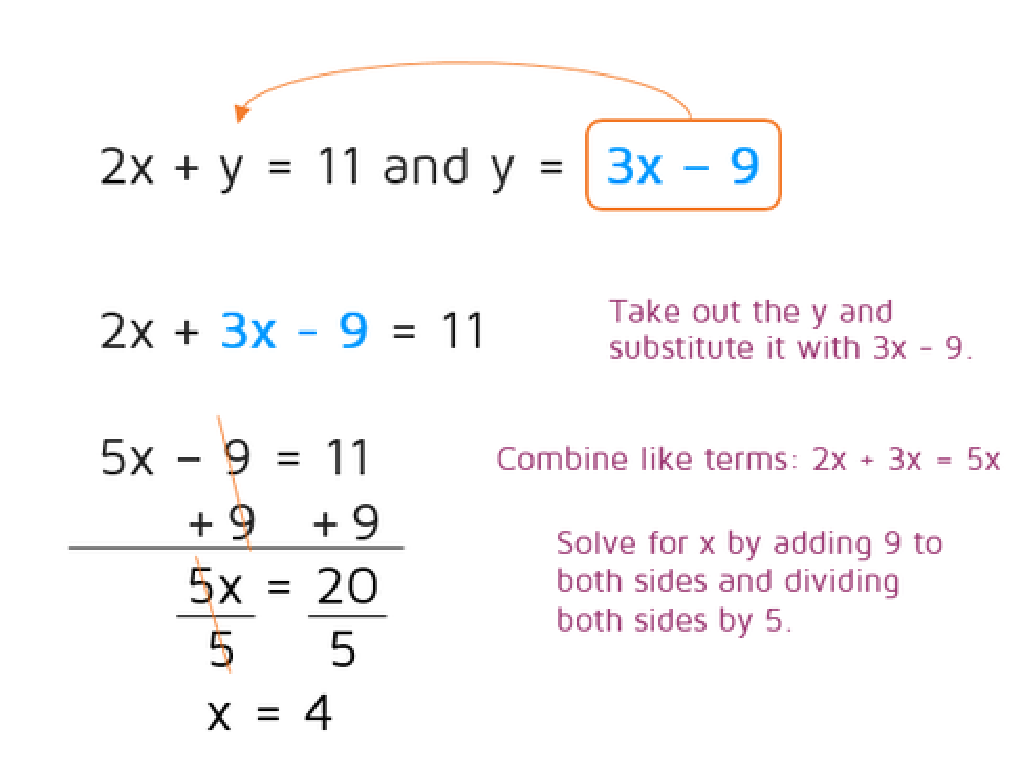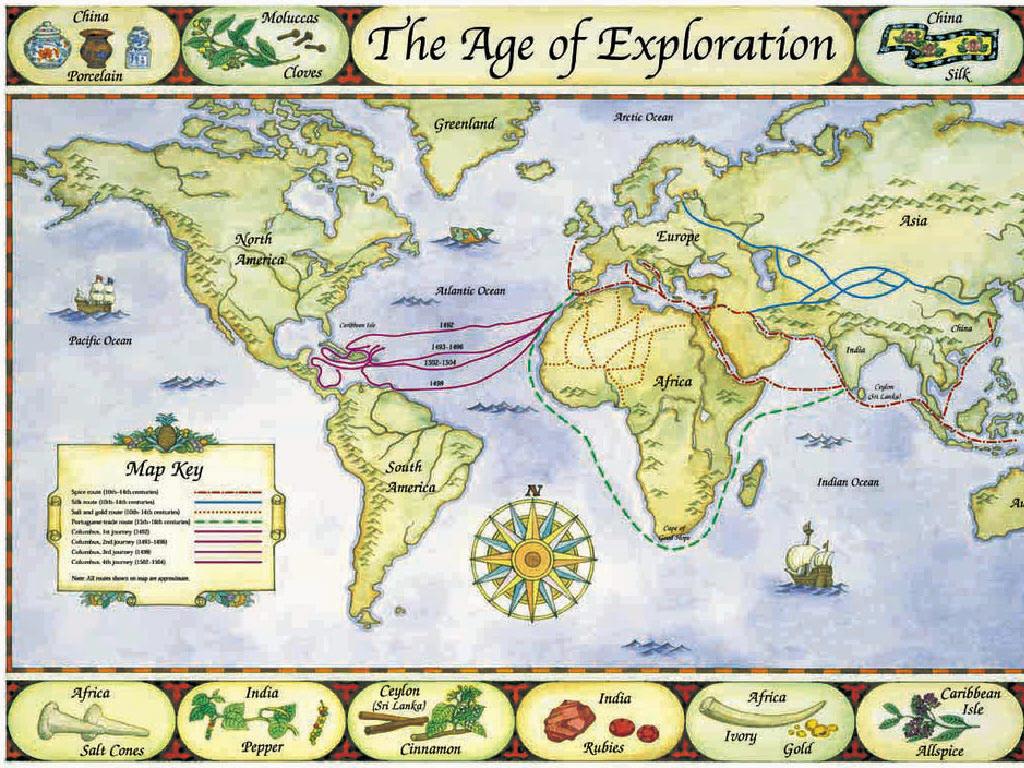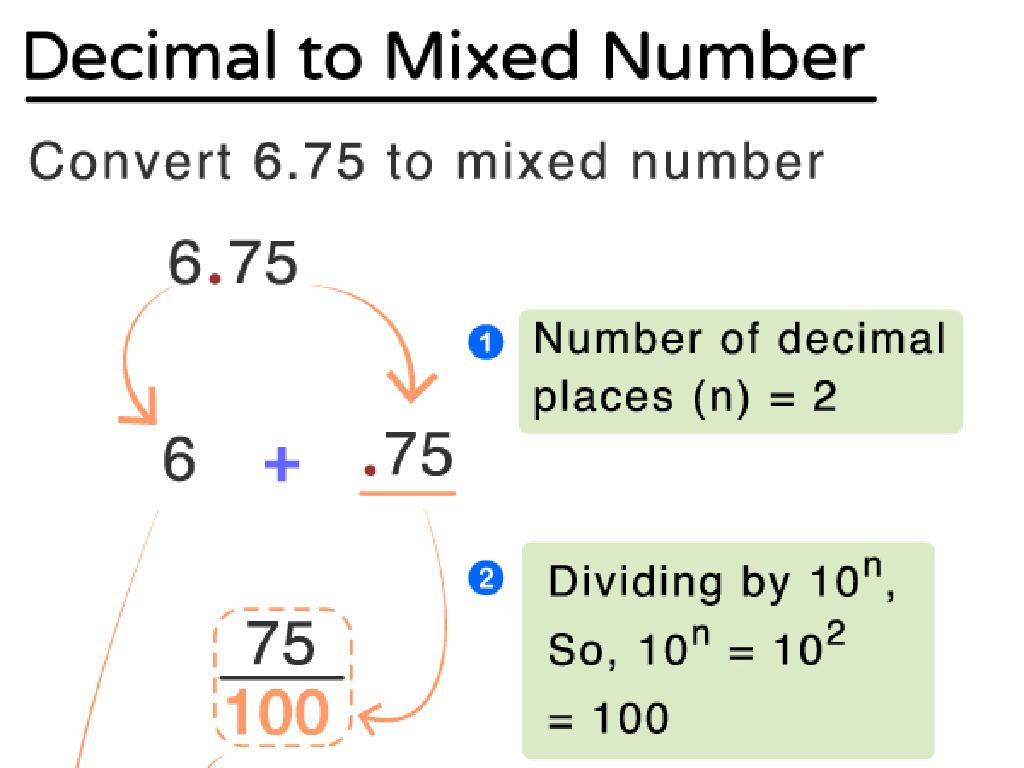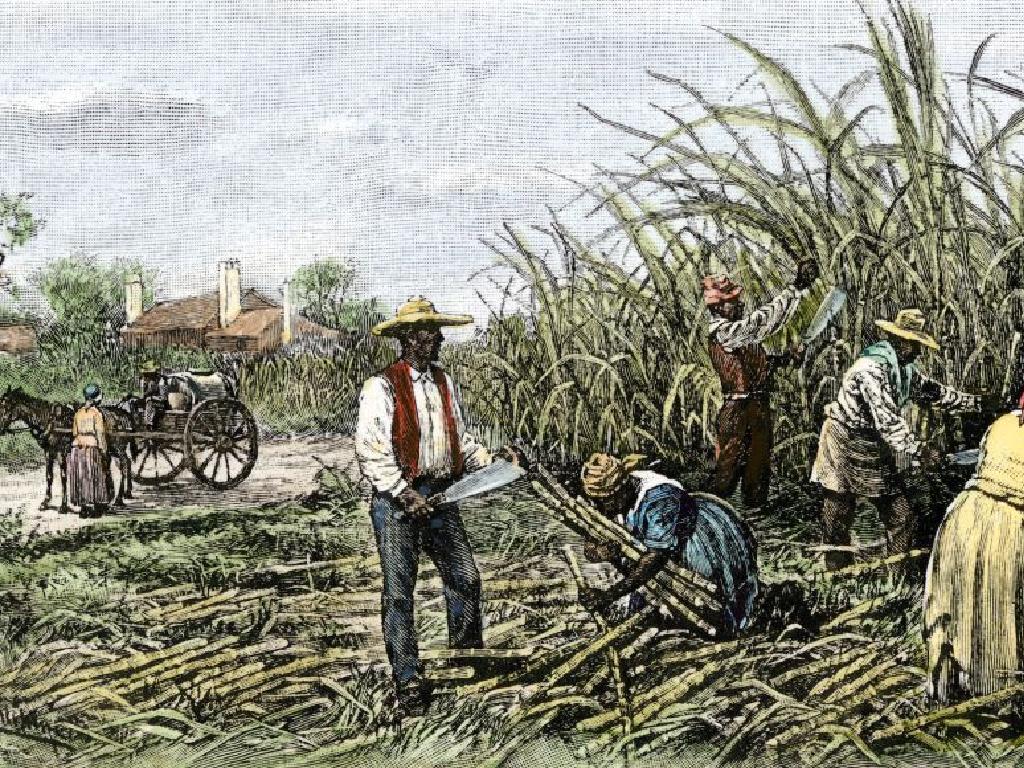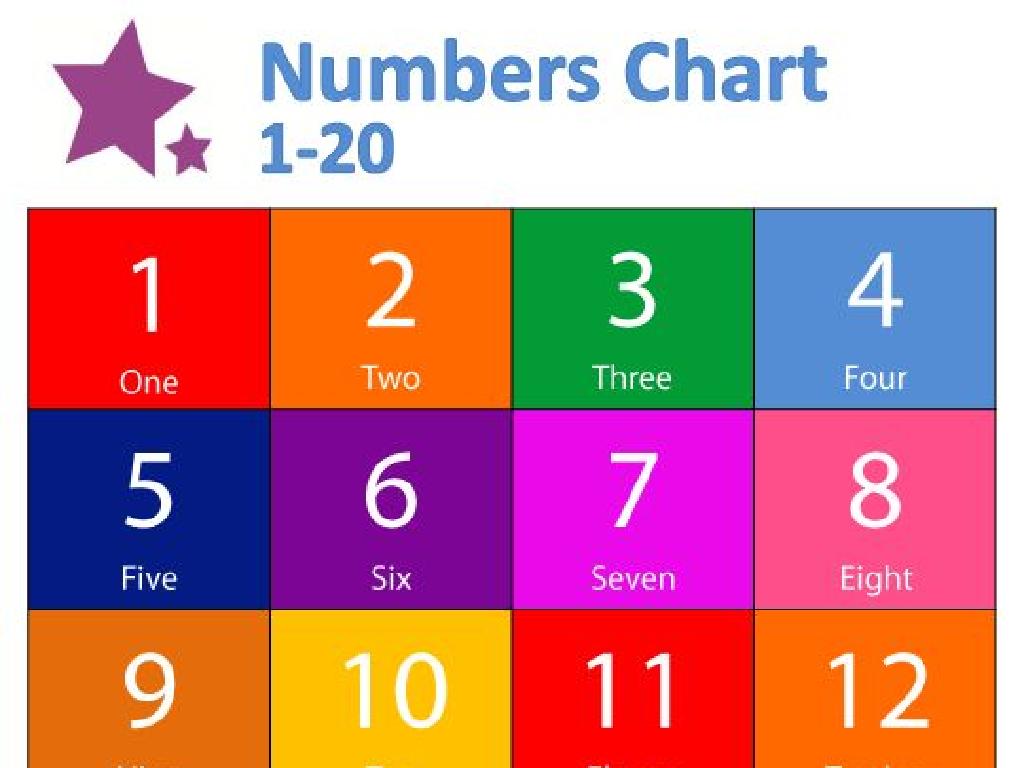Multiply Fractions By Whole Numbers: Sorting
Subject: Math
Grade: Fourth grade
Topic: Multiply Fractions And Whole Numbers
Please LOG IN to download the presentation. Access is available to registered users only.
View More Content
Multiplying Fractions by Whole Numbers
– Grasp the concept of fractions
– A fraction represents a part of a whole, like 1/2 of a pizza
– Recognize whole numbers
– Whole numbers are complete numbers without fractions, like 1, 2, 3
– Learn to multiply fractions by whole numbers
– If you have 3/4 of a cake and you need 2 times that amount, you multiply 3/4 by 2
– Discover how multiplication combines both
– Multiplication can increase the number of fractions you have, like having more slices of pizza
|
This slide introduces the concept of multiplying fractions by whole numbers to fourth-grade students. Begin by ensuring that students have a solid understanding of what fractions and whole numbers represent. Use tangible examples like pieces of pizza or cake to illustrate fractions. Explain that multiplying a fraction by a whole number is like having more of that fraction. For instance, if one slice of pizza is 1/4 of a pizza, two slices would be 2 times 1/4, which equals 2/4 or 1/2 of the pizza. Encourage students to visualize the process with real-life examples and provide practice problems to solidify their understanding.
Understanding Fractions
– A fraction is part of a whole
– Numerator and denominator explained
– Top number (numerator) shows how many parts we have. Bottom number (denominator) shows how many parts in total.
– Examples: 1/2, 3/4, 2/3
– 1/2 is one out of two parts, 3/4 is three out of four parts, 2/3 is two out of three parts.
– Visualize fractions with objects
– Use items like pizza slices or apple pieces to show fractions visually.
|
This slide introduces the concept of fractions to fourth-grade students. Begin by explaining that a fraction represents a part of a whole, such as a slice of pizza or a piece of a chocolate bar. Clarify the roles of the numerator and the denominator, with the numerator indicating the number of parts being considered and the denominator indicating the total number of equal parts in the whole. Provide concrete examples of fractions and use visual aids like drawings or physical objects to help students visualize and better understand the concept. Encourage students to think of their own examples of fractions from everyday life.
Multiplying Whole Numbers Review
– Review: Multiplication basics
– Multiplication equals repeated addition
Think of multiplication as adding the same number over and over.
– Example: 4 x 3 as addition
Instead of adding 4 three times, we can simply multiply 4 by 3.
– Practice with different numbers
Try multiplying 5 x 2 or 6 x 3 using addition.
|
Begin with a quick review of how to multiply whole numbers, ensuring that students recall that multiplication is a shortcut for repeated addition. Use simple examples like 4 x 3 to illustrate this concept, showing that it’s the same as adding 4 three times. Encourage students to visualize this process as groups of items, which can help them understand the concept of multiplication more concretely. After the example, give students a chance to practice with different numbers, both in their heads and on paper, to reinforce the concept. This will prepare them for understanding how to multiply fractions by whole numbers in the upcoming lessons.
Multiplying Fractions by Whole Numbers
– Multiply numerator by the whole number
– Keep the denominator unchanged
– Example: 1/4 x 3
– 1 times 3 equals 3
– Result: 3/4
– The fraction becomes three-fourths
|
This slide introduces the concept of multiplying fractions by whole numbers. Emphasize to students that the denominator, which represents the total number of equal parts, does not change when multiplying by a whole number. Instead, we are finding how many parts we have by multiplying the numerator, the number of parts we’re considering, by the whole number. Use the example 1/4 x 3 to show that we multiply the numerator (1) by the whole number (3) to get 3, and the denominator remains 4, resulting in 3/4. Encourage students to think of the whole number as the number of times you take a fraction of something. For instance, if you have a quarter of a pizza and you take it three times, you now have three quarters of the pizza.
Let’s Practice Multiplying Fractions by Whole Numbers!
– Multiply 2/5 by 4
– 2/5 times 4 equals 8/5 or 1 3/5
– Multiply 3/8 by 2
– 3/8 times 2 equals 6/8 or 3/4
– Step-by-step class walkthrough
– Discuss our answers together
|
This slide is designed for a collaborative class activity where students will practice multiplying fractions by whole numbers. Start with the first example by demonstrating on the board how to multiply 2/5 by 4. Break it down by multiplying the numerator (2) by the whole number (4) and keeping the denominator (5) the same, resulting in 8/5, which simplifies to 1 3/5. Then, move on to the second example, multiplying 3/8 by 2. Show that multiplying the numerator (3) by the whole number (2) gives us 6, and the denominator remains 8, simplifying to 3/4. Encourage students to work through the problems as you go and discuss the answers as a class. This will help reinforce their understanding of the concept and provide immediate feedback. For the activity, consider having students come up to the board to solve similar problems, or work in small groups to encourage peer learning.
Sorting Activity: Grouping Multiplied Fractions
– Learn to sort multiplied fractions
– Group fractions by size post-multiplication
– Activity: Arrange products small to large
– Sort: 1/2 x 3, 1/4 x 4, 1/3 x 2, and compare sizes
– Understand fraction multiplication impact
– See how multiplying changes fraction sizes
|
This slide introduces an activity focused on sorting fractions that have been multiplied by whole numbers. The goal is for students to understand how multiplication affects the size of fractions and to practice arranging them from smallest to largest. For the activity, provide students with a set of fraction products, such as 1/2 x 3, 1/4 x 4, and 1/3 x 2. Have them calculate the products and then sort the results. This hands-on activity will help solidify their understanding of the concept. Encourage students to discuss their strategies and reasoning with the class. As a teacher, be prepared to guide them through the process and clarify any misconceptions about multiplying fractions by whole numbers.
Class Activity: Fraction Multiplication Art
– Create a grid-based colorful design
– Assign colors to whole numbers
– Multiply fractions by whole numbers
– For example, if 1/2 is multiplied by 2, color two halves of a grid box
– Fill the grid with the correct colors
|
This activity combines art with math to help students visualize the concept of multiplying fractions by whole numbers. Provide each student with a grid and a set of colored pencils or markers. Each color will correspond to a different whole number (e.g., blue for 1, red for 2, etc.). Students will then multiply given fractions by these whole numbers to determine how much of the grid to fill in with the respective color. For instance, if the fraction 1/4 is multiplied by 4 (the whole number represented by red), the student will color one whole grid box red. This hands-on activity not only reinforces the concept of fraction multiplication but also allows for creativity and individual expression. Possible variations include using different shapes or grid patterns, or having students create their own problems to exchange and solve with classmates.
Wrapping Up: Fractions & Whole Numbers
– Congratulations on learning multiplication!
– Review the steps we’ve learned
– Recall: Multiply across the numerator and whole number
– Homework: Multiplying fractions worksheet
– Complete the provided worksheet for more practice
– Practice makes perfect!
|
Great job today, class! You’ve learned how to multiply fractions by whole numbers. Remember the steps we practiced: multiply the numerator by the whole number and keep the denominator the same. For homework, please complete the worksheet on multiplying fractions by whole numbers. This will help reinforce today’s lesson and prepare you for more complex problems. Keep practicing, and don’t hesitate to ask questions if you’re unsure about any steps!

